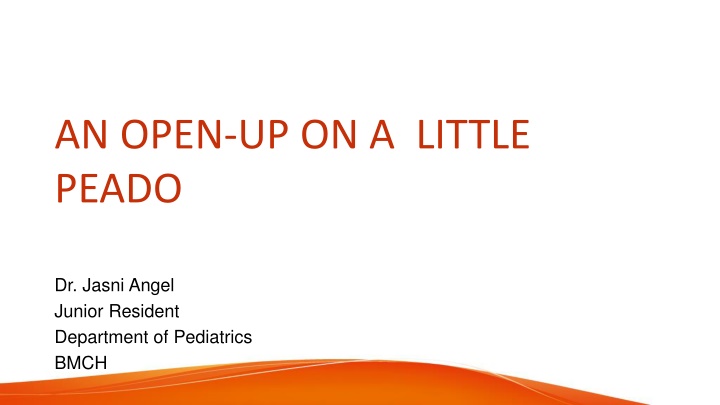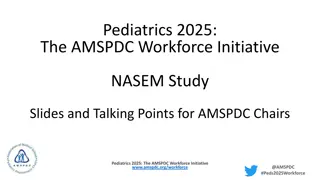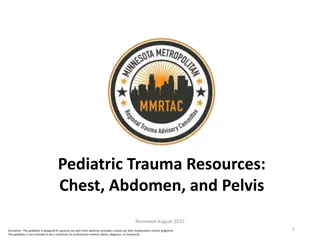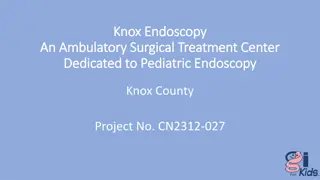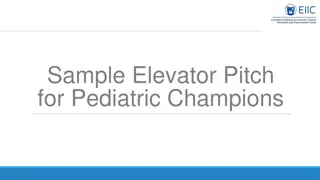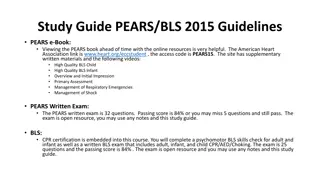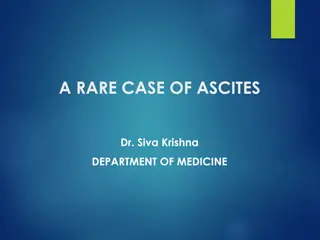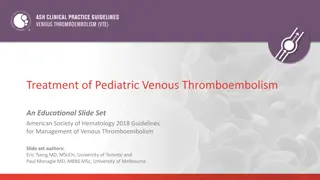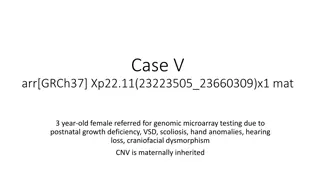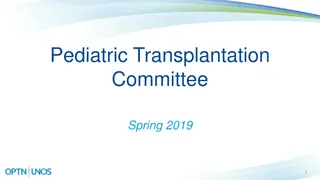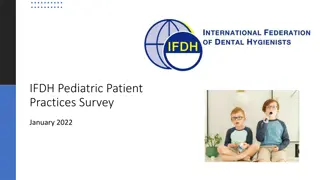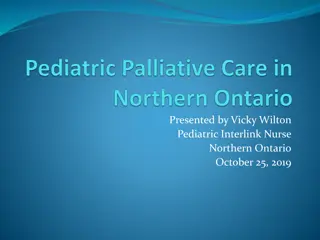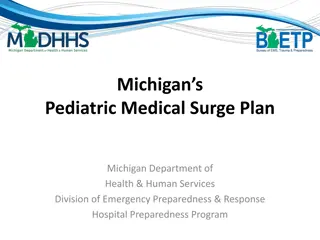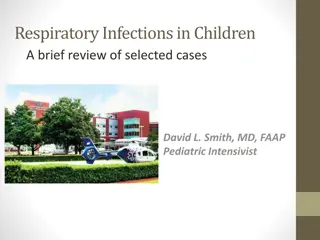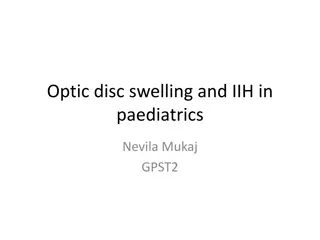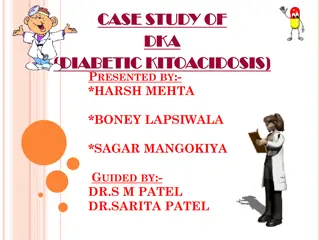Pediatric Case Study: Poor Growth and Development in an 8-Year-Old Female
A detailed case study of an 8-year-old female presenting with poor weight and height gain, along with general body pain. The history, examination findings, provisional diagnosis of malnutrition, and possible differentials like rickets are discussed. Investigations such as X-ray results on the knee are also included. This comprehensive analysis sheds light on the challenges in pediatric growth and development, addressing potential underlying causes and management strategies.
Download Presentation

Please find below an Image/Link to download the presentation.
The content on the website is provided AS IS for your information and personal use only. It may not be sold, licensed, or shared on other websites without obtaining consent from the author.If you encounter any issues during the download, it is possible that the publisher has removed the file from their server.
You are allowed to download the files provided on this website for personal or commercial use, subject to the condition that they are used lawfully. All files are the property of their respective owners.
The content on the website is provided AS IS for your information and personal use only. It may not be sold, licensed, or shared on other websites without obtaining consent from the author.
E N D
Presentation Transcript
AN OPEN-UP ON A LITTLE PEADO Dr. Jasni Angel Junior Resident Department of Pediatrics BMCH
8yr old female Chief Complaints: Poor weight and height gain since early childhood generalised body pain
HISTORY NVD, term, postnatal period uneventful,birth weight-2.4kg Non-consanguinous marriage Lower middle socio-economic class Breastfed exclusively, complementary feed started at 6months of age Adequate calorie and protein intake Developmental milestones-appropriate to age Good scholastic performance Immunised till date
General examination comfortable, oriented, normal intelligence poor built waddling gait widening of both wrists bowing of both legs dental ex- normal no pallor, edema vitals- WNL
Treated frequently with multivitamins and calcium supplements since 3 yrs of age- no improvement in height or weight No history suggestive of chronic illness Sibling history of similar complaints.
ANTHROPOMETRY Weight- 12kg ( 3rd percentile) expected weight-25.5 kg Weight for age- 47% Height for age- 73.1% Weight-for-height 70% Height- 91.4cm ( 3rd percentile) expected height- 125cm US:LS= 1.6:1 Head circumference- 54cm (b/w 75th-97th percentile) Tanner's stage- 0 Systemic Examiation- normal
160 cm 140cm 143.5 cm target height height= 91.4cm weight=12kg
Provisional diagnosis Grade 3 malnutrition wasting and stunting rickets
Differential diagnosis Nutritional rickets Familial hypophospahatemic rickets Renal rickets Hypophosphatasia
INVESTIGATIONS X-RAY KNEE: Rarefactions & trabaculations Lateral cortical spur Cortical thinning
X-RAY WRIST Cupping, fraying of metaphysis
Laboratory findings Sr. ALP- reduced(108 IU/L) Blood urea, Sr. creatinine- normal Thyroid function test- normal Liver function test- normal Arterial blood gas analysis- normal Sr calcium- normal(9.8mg/dl) Sr phosphate- elevated(8.7mg/dl) Sr 25 OH vit D- normal (54ng/ml) Sr PTH- normal(22.5pg/ml)
Urine calcium- normal(22.4mg/dl) Urine phosphate- normal(288mg/dl) Sr. Vit B6- low(62.8nmol/L) Sr.zinc- normal Sr.magnesium- normal
Summary H/o bone pain Waddling gait Rickets Serum ALP for age & sex 25-OH Vit D Calcium Sr. phosphate Sr. Vit B6 X-ray- normal
Diagnosis JUVENILE HYPOPHOSPHATASIA
HYPOPHOSPHATASIA rare, genetic disorder incidence- 1:100000 autosomal recessive autosomal dominant Mutation in ALPL gene DECREASED tissue non-specific Alkaline Phosphatase(TNSALP)
TYPES Perinatal: Severe- respiratory distress of newborn, bony deformities,hypercalcemia Benign- antenatal USG shows skeletal deformites; resolve over time Infantile: respiratory distress rickets without elevated Sr. ALP craniosynostosis vit B6 deficicent seizures failure to thrive
Juvenile/ Childhood: rickets unexplained, non-accidental fractures premature loss of primary theeth with intact root Adult: stress fractures pseudofractures early loss of adult dentition Odontohypophosphatasia: premature theeth loss dental caries no skeletal manifestations
CHARACTERISTIC FINDINGS: Low Sr. ALP Sr. 25 OH Vit D- normal Sr. calcium- normal or elevated Sr. phosphate- normal or elevated Sr. parathormone- normal Urine calcium- normal or elevated Sr. pyridoxol-5-phosphate / Vit B6- low Urine phosphoethanolamine- elevated
X-ray- cupping, fraying of metaphysis of long bones DEXA- decreased BMD for age and sex GENETIC STUDY- confirmatory
DIAGNOSTIC ALGORITM: ALP below reference range for age and sex R/o contamination with EDTA R/o chronic illness Symptoms of hypophosphatesia plasma PLP, Urinary PEA Skeletal survey Saraff V, Narayanan VK,Lawson AJ, et al
TREATMENT Definitive- enzyme replacement therapy ASFOTASE ALFA
SUPPORTIVE THERAPY: low impact physical activity & exercise NSAIDs Vit B6 supplementation PARENTAL COUNSELLING Sibling screening & management Genetic counselling Surveillance for complications- dental, sr. calcium
